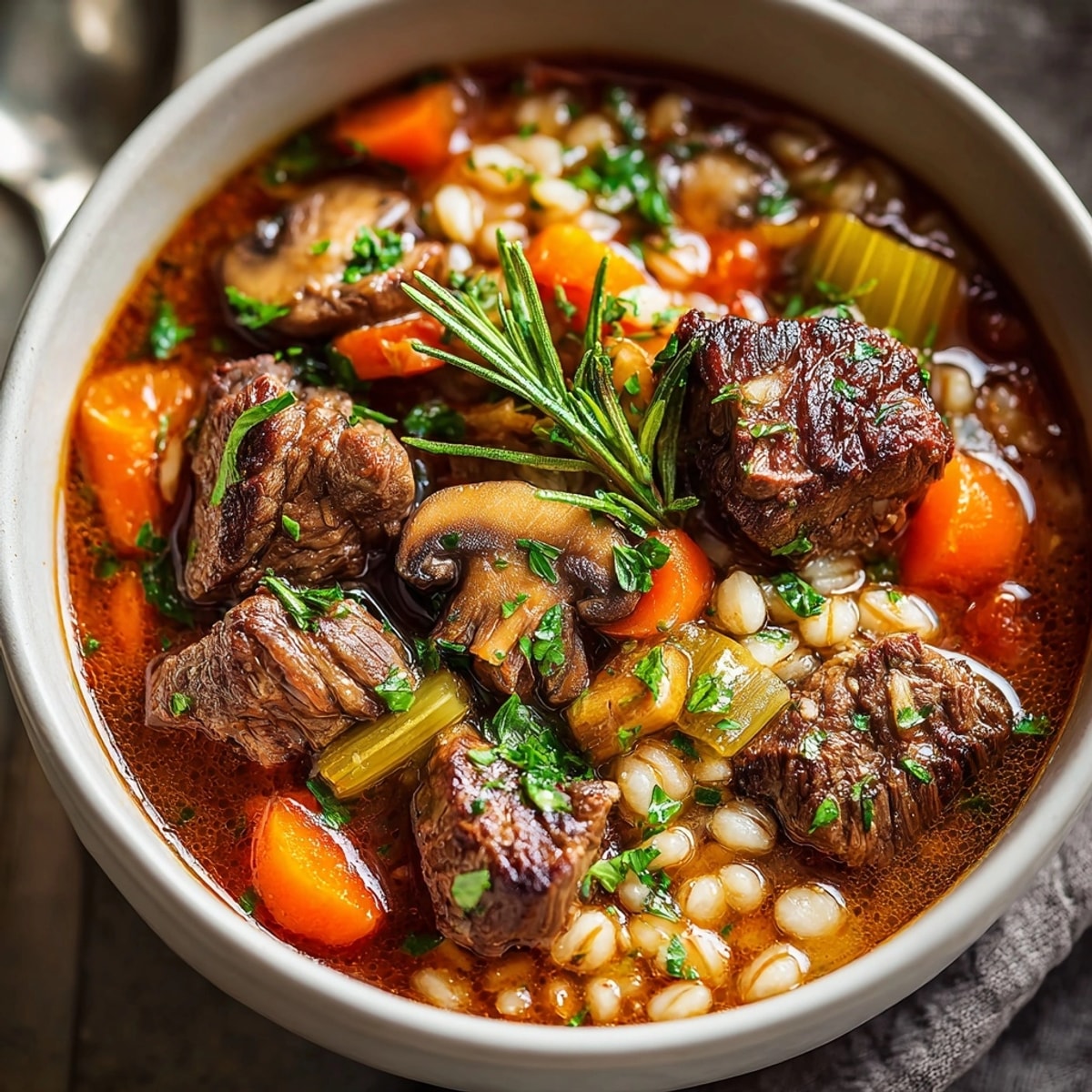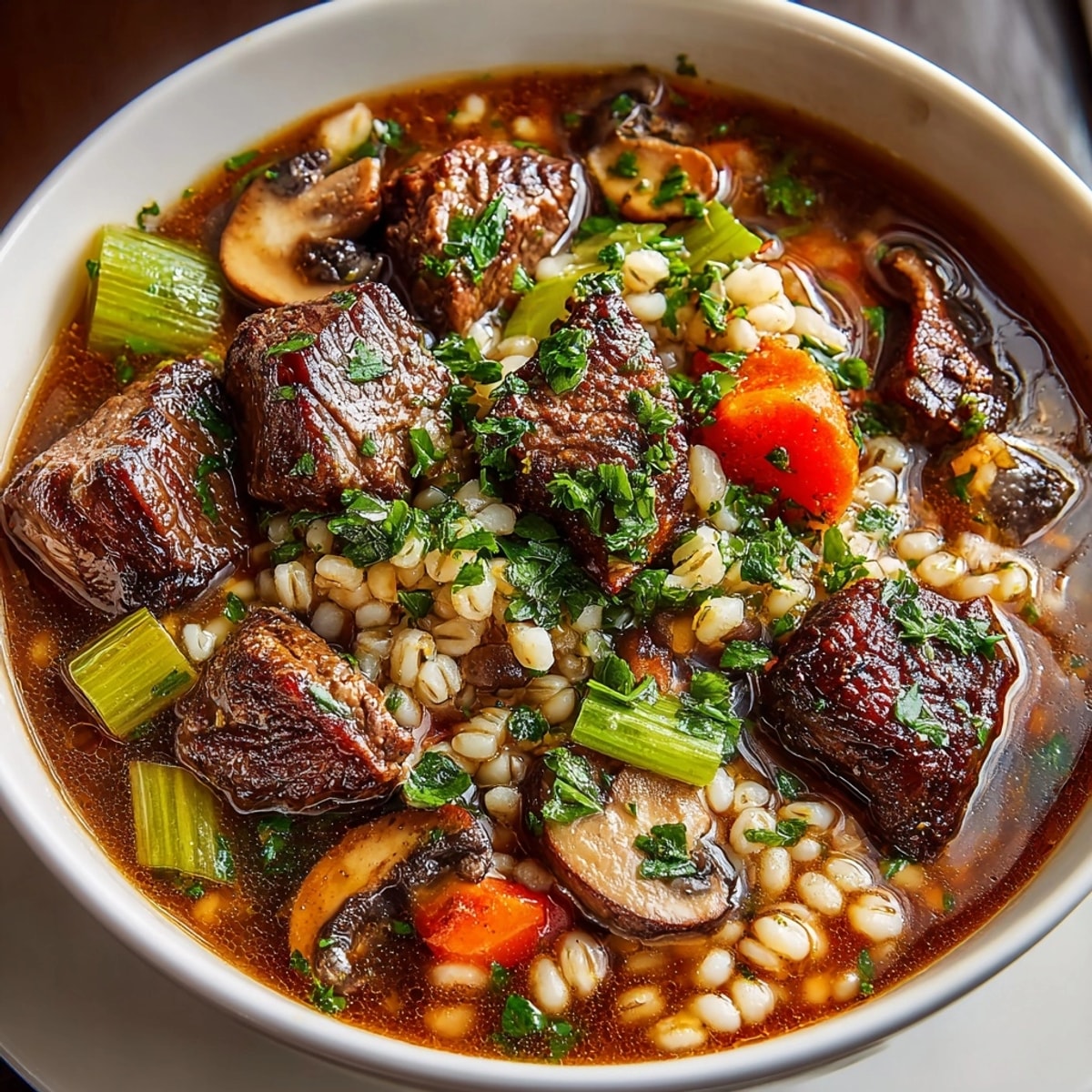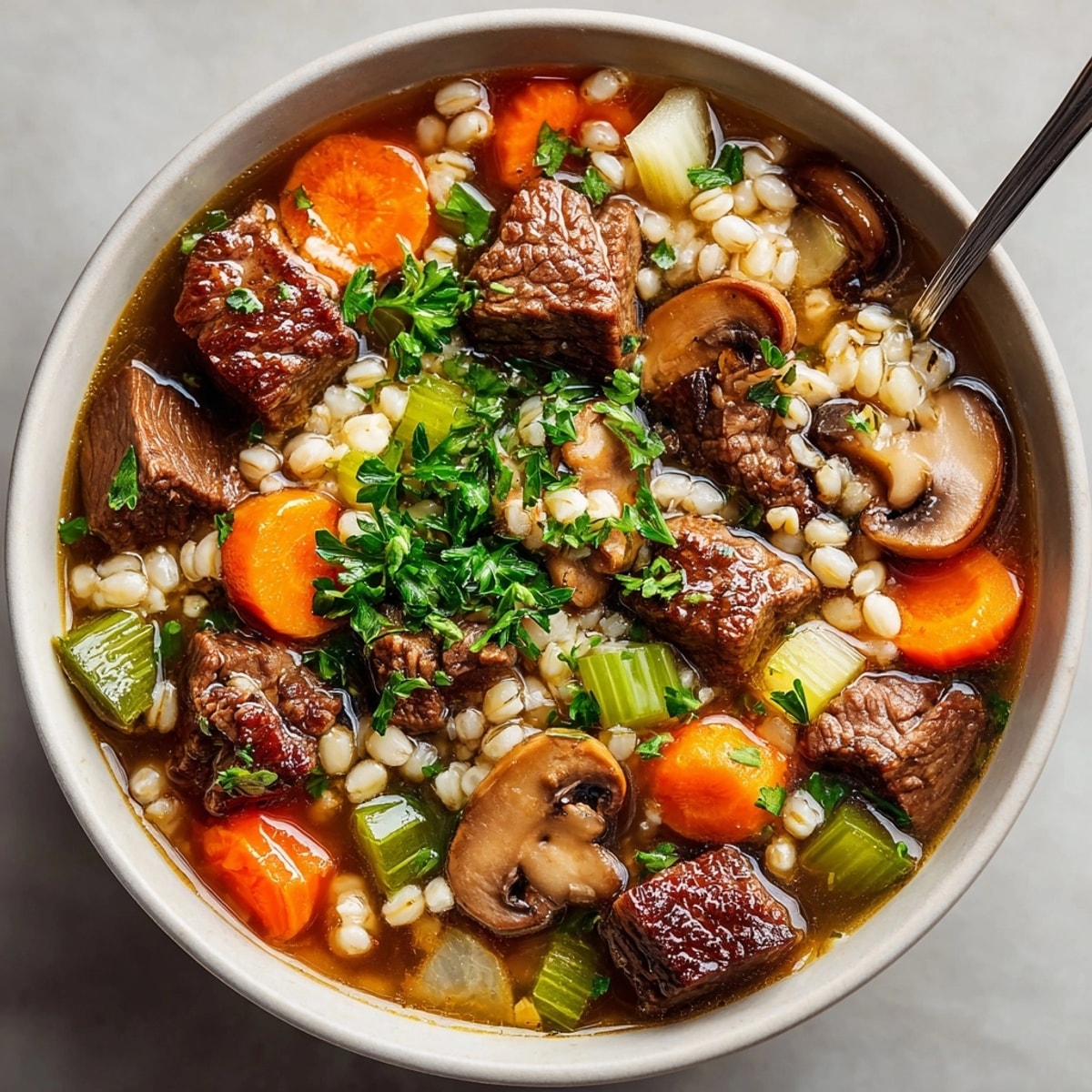 Save
Save This hearty beef and barley soup has been my family's winter comfort food for generations, combining tender chunks of beef with nutritious barley and vegetables in a rich, flavorful broth that warms you from the inside out.
I first made this soup during a particularly harsh winter when we were snowed in for three days straight. What started as a pantry cleanout became our most requested family meal, especially when someone is feeling under the weather or we need something comforting after a long day.
Ingredients
- Beef chuck or stewing beef: The marbling in these affordable cuts breaks down during cooking, creating incredible flavor and tender meat
- Pearl barley: This nutty whole grain adds wonderful texture and thickens the soup naturally as it cooks
- Onion, carrots, and celery: The classic mirepoix trio that forms the flavor foundation of any good soup
- Fresh garlic: Adds depth and complexity that powdered versions simply cannot match
- Mushrooms: Optional but highly recommended for their umami quality and meaty texture
- Diced tomatoes: The acidity balances the richness of the beef and adds beautiful color
- Beef broth: Use homemade if possible, or a high quality store bought version with minimal additives
- Herbs and spices: Bay leaves, thyme and rosemary create that classic soup aroma that fills your home
Instructions
- Sear the beef:
- Heat olive oil in a large Dutch oven until shimmering hot. Add beef cubes in a single layer without overcrowding the pan and let them develop a deep brown crust before turning. This step takes about 5 minutes but creates tremendous flavor through the Maillard reaction. Resist the urge to stir constantly.
- Sauté the vegetables:
- Using the same pot with all those flavorful beef bits, add your onion, carrots, celery, and mushrooms. Cook for a full 5 minutes until they begin to soften and the onions become translucent. The vegetables will release moisture that helps deglaze the pan, incorporating all the caramelized beef flavors.
- Add aromatics:
- Stir in the minced garlic and cook for exactly one minute. This brief cooking time ensures the garlic releases its aroma without burning, which would create bitterness.
- Build the soup:
- Return the browned beef to the pot along with the barley, tomatoes, broth, water, and all herbs and seasonings. This is the moment when everything comes together. The liquid should just cover all ingredients, allowing the barley room to expand as it cooks.
- Simmer gently:
- Bring everything to a boil, then immediately reduce to a gentle simmer. Cover the pot and let it cook undisturbed for 90 minutes. This slow cooking time allows the beef to become fork tender and the barley to cook perfectly while releasing its starches to thicken the broth naturally.
- Finish and serve:
- Remove the bay leaves as they remain tough even after cooking. Taste and adjust seasonings, adding more salt if needed. The soup should have a rich, well rounded flavor. Ladle into bowls and garnish generously with fresh parsley for color and a bright, herbaceous note.
 Save
Save The pearl barley in this recipe is truly magical. Unlike rice which can become mushy when reheated, barley maintains its pleasant chew even after freezing and thawing. My grandmother always said good barley soup was like a warm hug in a bowl, and I find myself thinking of her every time the aroma fills my kitchen.
Make Ahead and Storage
This soup actually improves with time as the flavors meld together. You can make it up to two days ahead and refrigerate it in an airtight container. The barley will continue to absorb liquid as it sits, so when reheating, you may need to add a splash of broth or water to achieve your desired consistency. For longer storage, freeze portions in individual containers for up to three months. Thaw overnight in the refrigerator before gently reheating on the stovetop.
Smart Substitutions
No beef chuck? Use beef short ribs, brisket, or even ground beef in a pinch. Each will change the texture slightly but still deliver great flavor. Pearl barley can be replaced with farro or wheat berries if you prefer, though cooking times may vary. For a gluten free version, substitute with brown rice or quinoa and reduce the cooking time to 45 minutes. Vegetable variations are endless. Try adding sweet potatoes instead of regular potatoes, toss in some frozen peas during the last 5 minutes of cooking, or add diced bell peppers with the other vegetables.
Serving Suggestions
While this soup is certainly hearty enough to be a complete meal on its own, there are several ways to elevate your dining experience. Serve it with a slice of crusty sourdough bread for dipping, or top each bowl with a small dollop of sour cream for added richness. For a complete dinner, pair with a simple green salad dressed with a light vinaigrette to balance the robust flavors of the soup.
Historical Context
Beef and barley soup has roots in traditional European peasant cooking, where economical cuts of meat were slowly simmered with available grains and vegetables to create nourishing, filling meals. Barley itself has been cultivated for over 10,000 years and was often used to stretch meals during lean times. This recipe honors that practical cooking tradition while updating it with modern conveniences like canned tomatoes and ready made broth.
 Save
Save This satisfying soup is perfect for a cold evening or a comforting lunch. Enjoy the rich flavors and hearty textures that make this a beloved family classic.
Recipe Questions
- → Can I substitute another grain for barley?
Yes, farro or brown rice can be used; adjust cooking times as needed to ensure tenderness.
- → How do I make this dish gluten-free?
Replace barley with a gluten-free grain like rice or millet, and confirm broth is gluten-free.
- → Can I add more vegetables?
Absolutely. Add bell peppers, peas, or spinach for extra nutrition and color near the end of simmering.
- → What is the best cut of beef to use?
Stewing beef or beef chuck works best as it becomes tender after slow simmering.
- → Is it possible to prepare this in advance?
Yes. Flavors develop beautifully overnight; simply reheat and adjust broth if thickened.
- → How can I store leftovers?
Store in an airtight container in the refrigerator for up to 4 days, or freeze for longer storage.